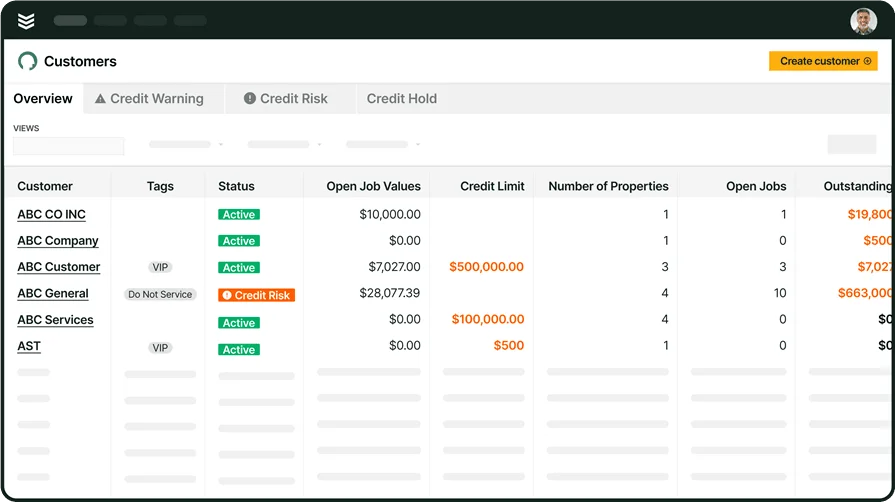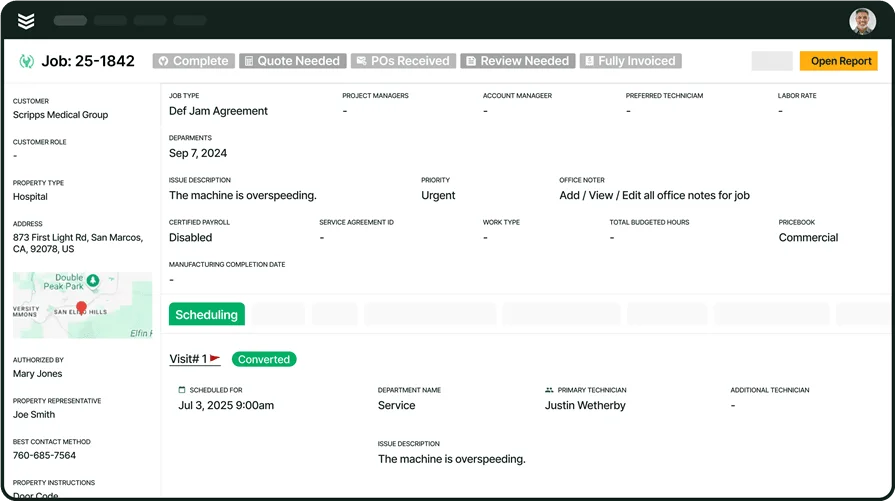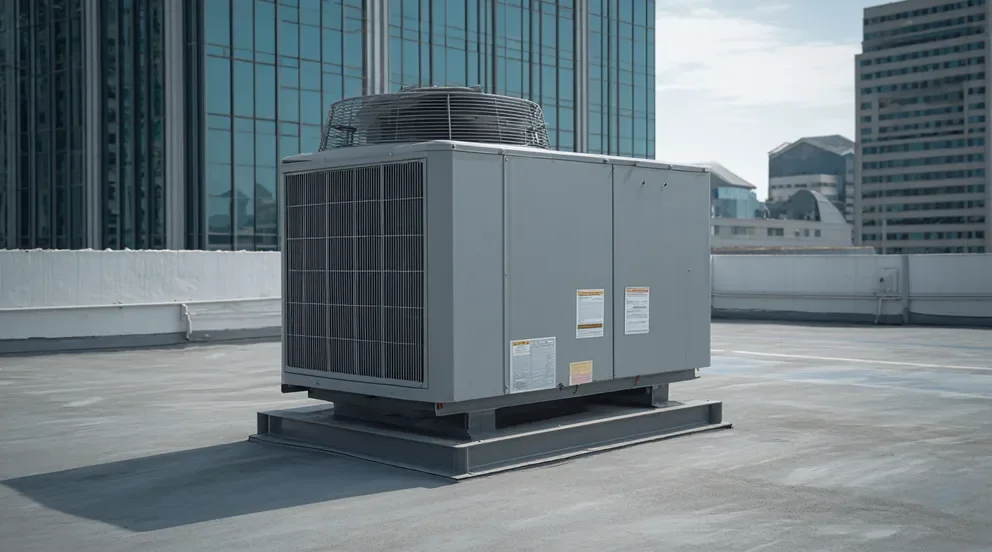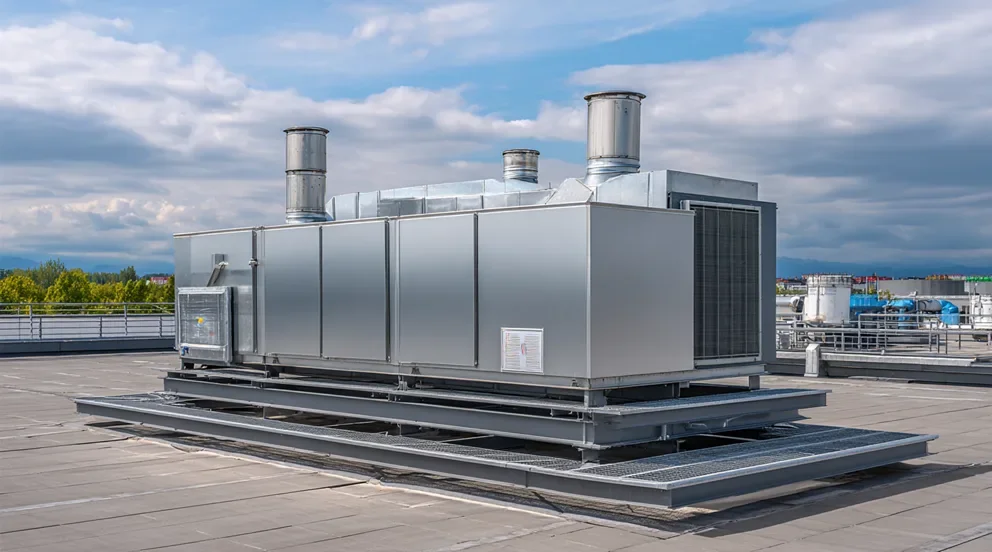The HVAC world runs on schedules, service calls, and keeping systems running in peak condition. But as the jobs pile up and the paper stacks grow, even the most experienced techs can feel the weight of disorganization. That’s where HVAC service platforms come in.
Whether you're running a crew of five or managing hundreds across multiple cities, an HVAC service platform helps turn daily chaos into a controlled workflow. From dispatching to job tracking, quoting to customer follow-up—it connects every piece of the puzzle into one streamlined system. For those in the HVAC industry, this kind of software can mean the difference between just getting by and running a tight, profitable operation.
Below, we’ll walk through what an HVAC service platform actually is, how to choose one, and why it might be the smartest move your team makes this year.
- Choosing the right HVAC service platform for your needs
- 6 key features to look for in an HVAC service platform
- 8 best HVAC service platforms for different types of contractors
- 7 benefits of using an HVAC service platform
- 5 important HVAC service platform FAQs answered
The tools you pick will shape how your team handles jobs, communicates in the field, and follows up with customers. Before locking anything in, it’s worth stepping back to figure out what actually matters most to your business—and how software can help meet those goals.
Choosing the right HVAC service platform for your needs
The way your HVAC business runs should shape the tools you use—not the other way around. Before comparing platforms or sitting through sales demos, it helps to step back and understand the key areas where a service platform can make or break your day-to-day. These points below will help guide the conversation with your team.
- Job types - Does the platform support the kind of work you take on—commercial installs, residential repairs, recurring maintenance? Can it handle multi-day jobs and one-off service calls with equal ease? Does it offer flexibility for tracking long-term projects?
- Scheduling and dispatch- How does it handle job booking and tech assignments? Can dispatchers see availability and move things around fast? Does it help reduce long drive times or downtime between jobs? Will it make scheduling more efficient, or just add another layer?
- Team fit - Can your office staff manage jobs without getting buried in admin tasks? Is the mobile app simple enough for techs to use without a learning curve? Does it support the way your team already works—or force them into a new process?
- Customer communication - Will it keep customers informed with job updates and appointment reminders? Can they review work, approve quotes, or pay online? Does the system help build trust with clear records of past service?
- Features - Does it offer route optimization, real-time job costing, or digital forms? Can you manage assets and warranties in one place? Are reporting tools easy to use and built for the kind of metrics that matter to your shop?
Dialing in these questions first will save time—and keep your crew from getting stuck with software that looks good in a demo but slows them down on the job. Next, we’ll break down six key features worth watching for when comparing platforms.
6 key features to look for in an HVAC service platform
If a tool only handles one task—like scheduling or invoicing—it’s just that: a tool. But an HVAC service platform? That’s something else entirely. A true platform connects your whole business, from the first customer call to the final invoice, with features that speak to how field service actually works.
These six features form the core of any solid HVAC service platform. Together, they make it possible to manage jobs, teams, and customers in real time—without the clipboard shuffle or mid-day check-ins that throw everything off track.
1. Real-time dispatching and technician tracking
A top-tier HVAC service platform should let you assign and update jobs in real time, track technician locations, and make adjustments on the fly. When techs get job details instantly on their mobile devices—and dispatchers can see who’s closest to the next site—it tightens turnaround time and reduces miscommunication.
Consider a scenario where a technician finishes an AC service call ahead of schedule. With HVAC service dispatching software, dispatch can spot their availability immediately and assign them to a nearby call—cutting downtime and keeping your day on track.
2. Dynamic scheduling tools
Drag-and-drop calendars, filtered tech availability, and smart conflict alerts make scheduling less of a chore and more of a control center. Your platform should help balance workloads, avoid overlaps, and adjust job sequences as needed without manual cleanup.
Say your office coordinator gets word that a tech called out sick right before a four-hour PM visit. With scheduling tools built for HVAC platforms, they can shift the job to another qualified tech in seconds, see what’s impacted, and notify the customer—all without a dozen phone calls.
3. Field-ready mobile access
Techs need to pull up job history, upload photos, complete forms, and even collect signatures—right from the job site. Mobile access is a must-have for HVAC service, especially when crews are constantly moving.
Think about a technician mid-way through diagnosing a rooftop unit. They spot damage tied to an older issue and need to verify the service history. With mobile access built for HVAC service platforms, they can pull it up, snap a few photos, and document everything without heading back to the office or calling for backup.
4. Connected quoting and approvals
A powerful quoting engine within your platform lets techs or office staff build accurate estimates using real parts, labor rates, and scopes of work—then send them for approval instantly. When customers approve on the spot, jobs can move forward without delays.
Let’s say your estimator finishes a site walkthrough and needs to send a multi-zone VRF bid. Using quoting software built for HVAC service platforms, they pull up templates, tweak quantities, and fire off the proposal—all before leaving the site. The customer signs that afternoon, and the job is booked before the day’s over.
5. Integrated invoicing and payment collection
No platform is complete without baked-in invoicing and payment tools. This includes creating invoices directly from completed jobs, automating payment reminders, and collecting digital payments—whether in the office or in the field.
For example, a tech wraps up a condenser swap and updates the work summary. With HVAC service invoicing and payment solutions, the invoice is auto-generated and sent to the customer, who pays online via credit card before your tech even leaves the driveway. No delays, no paperwork limbo.
6. Reporting and job performance insights
You need to know how long jobs take, which techs are hitting targets, and where profits are leaking. A solid HVAC platform brings those numbers together—from job duration to revenue-per-tech—so you can steer your business with real data.
Let’s say you’re trying to figure out why your maintenance division isn’t hitting monthly targets. With reporting features tailored to HVAC service platforms, you see that second visits are spiking on PM calls. Turns out, techs are missing checklist items because forms aren’t standardized. You fix the form and get your margins back in line.

Check out our service management suite
See how BuildOps empowers HVAC pros to book—and finish—more jobs.
Other valuable HVAC service platform features
While the core six features carry most of the workload, a true HVAC service platform includes other built-in capabilities that tighten the process from start to finish. These may not be the first things you ask about—but they’re the kind of tools that make your team faster, your data cleaner, and your workdays smoother.
- Recurring service management: Platforms that offer service agreement tools help teams stay ahead of preventive maintenance and recurring work. You can automate scheduling, track contract obligations, and avoid last-minute scrambles when deadlines hit.
- Fleet and asset tracking: A fully equipped HVAC platform should include fleet management features to monitor vehicle usage, maintenance status, and location history. This not only protects your assets but also helps optimize routing and dispatching decisions.
- Time tracking and job logging: With time tracking software tools, techs can log hours directly from the job site, while managers get accurate labor costs tied to each project. It’s a critical tool for both payroll accuracy and project profitability.
These features might seem like add-ons, but when they’re baked into the same platform your techs already use daily, they boost efficiency without extra complexity.
8 best HVAC service platforms for different types of contractors
No two HVAC businesses run the same—and your software should reflect that. Whether you're managing five techs or fifty, focusing on residential service or large-scale commercial installs, your platform needs to support the way your crew actually works. Here's a breakdown of HVAC service platforms that rise to the challenge based on your business type.
1. Best HVAC service platform for commercial: BuildOps
BuildOps was made for commercial HVAC teams handling job volume, multiple techs, big contracts, and tight timelines. It connects quoting, dispatching, scheduling, asset tracking, service agreements, invoicing, and reporting—without forcing your team to bounce between apps. Office staff, techs in the field, and even customers stay on the same page.
How Pricing Works: Custom pricing, tailored based on your operation’s size and what features you need. You'll walk through the platform before getting a quote.
What Sets It Apart for Commercial: This platform supports complex workflows out of the box—like scheduling multiple techs to the same job, tracking asset maintenance by site, managing multi-property client relationships, and handling PM contracts. It’s not a generic service app trying to adapt to HVAC—it’s designed to handle the jobs your commercial crew runs every week.

Want to see BuildOps in action?
Our service management suite empowers HVAC pros to get jobs done faster.
2. Best for residential: Housecall Pro
Image Source: Housecall Pro
Housecall Pro is geared toward residential contractors who want something simple, clean, and mobile-friendly. You get features like online booking, automatic job reminders, basic estimates, and payments. It’s fast to learn, easy to use, and works well for smaller teams doing high-volume residential calls.
How Pricing Works: Plans start at $49/month. More advanced features (like custom workflows and reporting) are available in higher tiers up to $199/month.
What Sets It Apart for Residential: The customer-facing tools are its standout. Homeowners can schedule appointments, view past work, approve estimates, and make payments online through a client portal. It’s lightweight and great for solo techs or smaller teams—but might hit its limit for larger operations or commercial needs.
3. Best for general contractors: Jobber
Image Source: Jobber
Jobber is made for field service businesses that wear a lot of hats—HVAC, plumbing, lawn care, you name it. It’s flexible enough to cover multiple trades and good at keeping track of scheduling, quotes, and payments across service types. But if you're looking for features specific to HVAC—like detailed asset tracking or PM workflows—it might fall short.
How Pricing Works: Starts at $69/month with higher-tier plans offering automation, quote follow-ups, and custom fields at $169/month.
What Sets It Apart for General Contractors: It’s ideal for shops doing a mix of HVAC and other field services. You get one system to run most of your business, with fast setup and good mobile access. But HVAC-heavy operations may find it lacks the depth for job costing, service agreements, or detailed tech tracking.
4. Best for small to mid-sized HVAC businesses: ServiceTrade
Image Source: ServiceTrade
ServiceTrade targets commercial service contractors, especially those doing ongoing maintenance, inspections, and emergency repairs. It handles recurring jobs well and supports basic dispatching, customer records, quoting, and asset management. However, real-time field communication, dispatch flexibility, and end-to-end reporting are limited unless you stack add-ons.
How Pricing Works: Pricing is quote-based and varies by user count. Expect base plans to start around the $100–$150/user/month mark, with add-ons for integrations and mobile features.
What Sets It Apart for Small to Mid-sized HVAC Businesses: The platform shines when it comes to managing inspections, recurring service routes, and asset histories across multiple customer sites. If your business is built on PM agreements and service visits, it fits the workflow. But for businesses needing live dispatch control, advanced job costing, or flexible mobile features, it may feel a bit behind.
5. Best for independent HVAC contractors: FieldEdge
Image Source: FieldEdge
FieldEdge is designed with independent techs and small businesses in mind. It includes scheduling, dispatch, quoting, invoicing, and a decent CRM—all within a single app. The dashboard is simple enough to use without needing a dedicated office staff. That said, scaling up can expose some workflow gaps.
How Pricing Works: FieldEdge offers custom pricing based on business needs. Generally suited for smaller shops starting with basic features and scaling up over time.
What Sets It Apart for Independent Contractors: It’s built to help solo or small-team contractors stay organized on the go. The mobile app keeps jobs, invoices, and customer info in one place—without needing an admin to manage it all. For growing operations, however, it may fall short on advanced reporting and project-level tracking.
6. Best for mobile-focused HVAC teams: Workiz
Image Source: Workiz
Workiz is tailored for service teams that run lean and prioritize mobile operations. The platform supports real-time job dispatching, two-way customer texting, and voice over IP—all from one app. It integrates with Google, QuickBooks, and payment tools like Stripe. However, it lacks the operational depth larger commercial contractors may need.
How Pricing Works: Starts at $225/month for up to 3 users. Custom pricing available for larger teams.
What Sets It Apart for Mobile Teams: Built for techs in the field, Workiz gives teams the tools to quote, dispatch, message customers, and collect payments on the go. Great for fast-moving residential service teams—less ideal for complex commercial jobs.
7. Best for customer communication and scheduling: Service Fusion
Image Source: Service Fusion
Service Fusion focuses heavily on customer experience. With features like automated reminders, live GPS tracking for techs, customer portals, and call masking, it’s designed to help teams maintain a polished front-end without needing a massive backend system. The HVAC platform also handles job scheduling and invoicing, but reporting and contract tools are limited. However, if your team needs advanced project management or asset tracking, this one might not be the fit.
How Pricing Works: Flat pricing model starting at $195/month for unlimited users, making it attractive for growing companies.
What Sets It Apart for Customer-Facing Operations: The front-end tools shine—automated updates, real-time location sharing, and branded communication make a strong impression.
8. Best for field-to-office visibility: Kickserv
Image Source: Kickserv
Kickserv focuses on syncing what your HVACtechs see in the field with what your office needs to manage behind the scenes. It offers tools for job scheduling, real-time updates, customer communications, invoicing, and mobile work order management. While it’s not as feature-heavy as larger HVAC service platforms, it’s reliable for contractors looking for solid visibility without a bloated system.
How Pricing Works: Free tier available with basic tools. Paid plans start at $59/month and scale up depending on features and users.
What Sets It Apart for Field-to-Office Sync: Kickserv lets field techs update job notes, upload photos, and complete tasks directly from their devices—while office staff sees changes in real-time. Ideal for smaller teams looking to reduce miscommunication and cut down on phone tag between the field and dispatch.

Get the HVAC growth report
See how leading HVAC contractors achieve business growth that lasts.
7 benefits of using an HVAC service platform
An HVAC service platform brings more than digital scheduling—it becomes the central tool your team leans on to run the entire operation. From boosting job accuracy to improving customer relationships, the right platform helps field service businesses stay sharp, efficient, and in control. Whether you’re managing commercial sites, residential contracts, or a mix of both, these are the real outcomes teams see when their tools are working the way they should.
1. Increased technician productivity
With job details, service history, and asset data available in one place, techs spend less time checking in and more time getting work done. They can upload photos, complete forms, and track tasks from the field—cutting out downtime and guesswork. Teams using HVAC field service management platforms often report faster job turnaround and fewer callbacks simply because everyone knows exactly what’s happening at the site before rolling up.
2. Better job tracking and accountability
Every job has a digital paper trail. From dispatch to invoicing, managers can see who did what, when, and how long it took. That visibility makes it easier to address bottlenecks, assign resources, and keep jobs moving without chasing updates. When systems include real-time updates and mobile reporting, it’s easier to enforce checklists, flag delays early, and track what’s complete. Platforms with this kind of field service visibility for HVAC teams build stronger habits across both field and office roles.
3. Higher close rates on service quotes
Platforms with built-in quoting tools make it easier to send proposals while the job is still fresh—often right from the job site. The faster the quote goes out, the better the odds of winning the job. Your techs become part of the sales engine, not just the service team. With tools that track open quotes and flag follow-ups, HVAC service platforms designed to improve quote-to-close performance give teams a better shot at locking in revenue without leaving money on the table.
4. Improved customer experience
Automatic reminders, real-time ETA updates, and easy access to job history help customers feel more informed and in control. That translates to fewer inbound calls, less frustration, and better reviews. When customers know what to expect—and can approve work, pay online, and get updates without calling in—it reflects the kind of professional experience that top HVAC service operations are known for.
5. Accurate reporting for smarter decisions
Managers can pull reports on completed jobs, labor hours, margins, equipment usage, and more—all in one dashboard. That kind of data helps you price jobs better, schedule more efficiently, and identify top-performing techs. The commercial HVAC growth report shows how contractors using digital platforms were able to adjust strategy faster than those using manual systems—because they could actually see what was working.
6. Reduced administrative overhead
No more juggling spreadsheets, separate invoicing systems, or duplicate data entry. Office staff can handle more with fewer errors when the platform ties everything together—dispatch, estimates, invoicing, and payments. That reduction in rework and paperwork not only saves time but helps your team focus on customer communication and strategic work instead of chasing job info.
7. Easier onboarding for new team members
Whether it’s a new dispatcher, service manager, or tech, having one system that lays out schedules, job info, and standard processes makes training simpler. New hires can start learning real workflows right away, instead of shadowing for weeks before touching the tools. An HVAC service platform turns your process into something that’s repeatable—not something stuck in a few people’s heads. That structure helps companies grow without the growing pains.
5 important HVAC service platform FAQs answered
Before bringing in any new system, it’s natural to have questions—especially when the tool could affect your techs, your office team, and your customers all at once. HVAC service platforms are becoming the backbone of how modern service businesses operate, helping connect everything from the first work order to the final invoice.
Still, if you're on the fence or comparing tools, it's important to cut through the buzzwords and get straight answers. Here’s what contractors really want to know when weighing their options—and what you should keep in mind before committing.
1. What is an HVAC service platform?
An HVAC service platform is a digital system that connects scheduling & dispatch, quoting, CRM, invoicing, and reporting into one place, built specifically for field service operations. These platforms help HVAC contractors manage everything from daily job flow to long-term service agreements.
2. How does an HVAC service platform work?
It pulls all core functions—like scheduling, dispatch, job tracking, and customer info—into a single interface. Techs get updates on their phones, office staff tracks job progress in real time, and everything from quotes to invoices flows through one system.
3. Is an HVAC service platform worth the cost?
Yes—especially for contractors managing multiple techs, recurring work, or commercial clients. These platforms reduce errors, speed up workflows, and help track costs more accurately. That time and money saved more than covers the investment.
4. Who needs an automated HVAC service management platform?
Anyone who deals with:
- Missed or overlapping appointments
- Lost paperwork or miscommunication
- Slow approvals and delayed invoices
- Manual tracking of assets or service history
- Field teams that rely on office calls for job info
If any of that sounds familiar, it’s time for a platform that automates the chaos.
5. Should I get a stand-alone HVAC service platform, or an FSM software that has service management capabilities?
If HVAC is your primary business, go with a purpose-built HVAC service platform. FSM tools often spread wide across industries and may lack depth where you need it most—like equipment tracking, technician workflows, and service agreement handling. Choose the tool built for your work, not one that tries to fit every trade.
When you’re running a growing HVAC business, your tools shouldn’t hold you back. Whether you're sending out a single tech or managing dozens across service routes, the right HVAC service platform ties everything together—scheduling, dispatch, quotes, field updates, and job completion tracking.
A lot of tools out there promise automation or "all-in-one" fixes, but only cover the basics. Many of the features we broke down—like asset-level tracking, technician load balancing, integrated quoting, or field-to-office updates—aren’t standard. They're often scattered across separate apps or locked behind expensive add-ons.
That’s where platforms like BuildOps stand out. It brings all of those functions into one system, purpose-built for commercial contractors who manage big jobs, repeat service calls, and multiple techs in the field. If you’re trying to get everything under one roof and run a tighter operation without duct-taping tools together, that’s what sets it apart.

Take a closer look at BuildOps
We connect field technicians with office staff so projects run smoothly.








